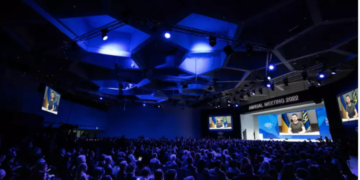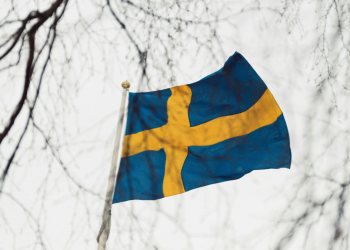After a two-year hiatus due to the COVID-19 pandemic, the annual meeting of the World Economic Forum (WEF) returned to its presence in Davos, Switzerland, May 22-26.
The WEF, which describes itself as “[…] the international organization for public-private cooperation,” states that its mission is to engage “[…] key political, economic, cultural and other leaders in society to shape global, regional and sector agendas.”
One such agenda is, without a shadow of a doubt, the LGBT+ agenda, as evidenced by one of the articles on the Forum’s website, titled Why LGBTQ representation should be a priority for business and media. According to the article, in short, the world of communication and advertising should incentivize and diversify the presence of LGBT+ persons, for example, in TV programs and commercials, for two orders of reasons.
The first reason would be to increase inclusion and combat discrimination that homosexual or transgender people might face. In contrast, the second, less noble and more prosaic reason, would be to sell more.
After noting some critical issues they find troubling in attitudes toward LGBT+ people, the authors of the article report accurate statistical data. “A 2021 Gallup poll,” they write, “found that 7.1 percent of [people in] the US identify as lesbian, gay, bisexual or transgender, which is double the percentage from 2012, when Gallup began tracking the community. Perhaps more importantly, one in five Gen Z members (21 percent) now identify as lesbian, gay, bisexual or transgender, and this percentage has nearly doubled in just five years.”
According to the US-based analytical firm, known for its worldwide opinion polls, in the USA one in five of those born between 1997-2012 would belong to the LGBT+ community, and that figure would be steadily increasing. If, as is often the case, what happens in those latitudes also reverberates on other countries, the numbers become high.
It is not surprising, then, that Davos, where business acumen is certainly not lacking, emphasizes how a target that is already so large and in any case developing cannot be overlooked. Especially if, as the two authors continue, “most Americans not only feel comfortable seeing LGBT+ people in the media and in advertisements, but actually look more favorably on brands that include LGBT+, according to [activist organization] GLAAD and the LGBT+ Inclusion in Advertising & Media report by GLAAD and P&G.”
The article also cites other studies focusing on marketing and advertising, all of which have the same implications: LGBT+ people need to be represented in an even more diverse, comprehensive, exhaustive way on TV screens, in prime-time TV series, in films and in music videos, so as to foster cultural acceptance in the community and make themselves palatable to the general public.
And this is despite the fact that the small screen doesn’t really seem to neglect it, if based on Where We Are on TV report by GLAAD “[…] the first edition of the report, published 26 years ago, had 12 regular LGBT+ characters in total, while the most recent one had 637 regular and recurring LGBT+ characters, 53 times more.”




















Discussion about this post